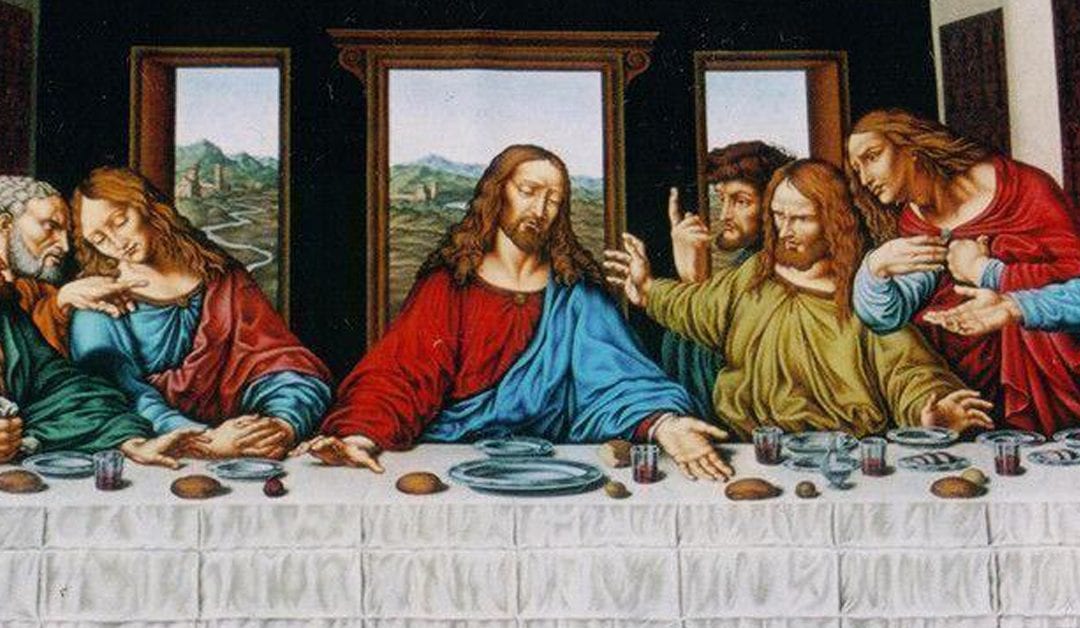
I got four complaints yesterday that people could not get the “Donate” button to work on the CORAC site. The best I can come up with at this point is that some browsers do not integrate well. Also, when people use duck-duck-go as the search engine on their phone to donate, it often does not go through. We have checked and double-checked here and with our service provider – and it is almost certain now that the problems are coming from individuals’ browsers and security settings. Obviously, as you can see from the thermometer above, many are getting through. We are up to $11,180 now of our $20,000 goal for this Epiphany campaign.
If you can’t get through, you can always mail a check directly, made out to:
Corps of Renewal and Charity (The bank prefers you spell it all out)
13940 W. 26th Ave.
Golden, Colorado 80401
Your generosity will help us kick what promises to be a very active year off right! God bless you.
*********
We are working right now to get volunteers to help CORAC arrange ride-sharing to Washington, D.C. for the Epiphany. I will have more solid information up tomorrow. Meantime, if you want to make arrangements today, you can go to the Wild Protest website. At the bottom of the site it is connecting people to share rides. If you are going and can offer a ride to others along your way, please contact Mary Lapchak at lapchakma@gmail.com. Mary has asked that people contact her with the following information:
- People who are willing to give a ride
- People who need a ride
- Notification if you are planning to attend, even if you are driving yourself. That way we can notify everyone there of any rally points or any problems that develop.
We will keep track of the caravans, put people who are offering rides together with people looking for rides and keep people apprised of any needed information along the way. I give thanks for the wonderful people who are assisting Mary to organize all of this.
If you would like to join the volunteer pool of people who can help generally with sporadic administrative and organizational projects, drop Mary a line, too.
*********
Many people were deeply heartened by the Proclamation issued by President Trump on Monday honoring St. Thomas Becket. I am one of them. Many here have commented on it – and I figured all should be able to take a look at this noble proclamation.
*********

(I refuse to put bad art up to illustrate this piece. So enjoy some great art celebrating truth and beauty instead!)
Our friend the eschatologist, Desmond Birch, has been putting up articles on Facebook examining the larger consequences of bad philosophy on society and our culture. His latest examines the attack on truth and beauty in art. Vatican Nativity Scene? All of these are themes he will be developing in his coming new book. You are among his first audience. Here then, the piece is reprinted:
By Desmond Birch
Brothers and Sisters, we are back to the series on the disastrous effects of bad philosophy on our world.
This piece has developed as a result of a recent ‘The Catholic Thing’ article, which was a commentary about a New York Times column written by the ‘Times’ art/culture critic. That critic recently attended a Tridentine Mass in Paris – and was struck by the beauty of the Church and the service. She described that experience in the ‘Times’. The author of the ‘Catholic Thing’ article lamented the disappearance of beauty in many venues – including liturgy – and seemed to think that the Tridentine Mass in and of itself might bring the whole world back to its senses.
I found it difficult to understand how the New York Times CULTURE CRITIC in Paris, Laura Cappelle, was unaware that the very definition of ART was formally changed primarily by mid-20th century philosophers. They did so by formally dropping “beauty” as a requisite part of the definition of art. Those 20th century philosophers’ deletion of beauty as a part of art – whether in sculpture, painting, architecture, music, literature , etc., – was accepted first by the ‘art world’, and, then was trickled down to the man in the street by our highly cultured media. [The book to come at the end of this series will be listing a broad chain of disastrous results of bad philosophy in our time. The virtual destruction of appreciation for true beauty in the majority of our culture will be prominently portrayed in that list.]
In the entire history of art [certainly in the Western world], the very central essence of art was formally defined and understood to be “beauty”. As a boy in the 1940’s, I had already been taught and understood common understanding that “beauty” was the very heart and soul of all art, no matter what the form, fom painting to poetry, etBy the 1940’s, the dropping of beauty from the philosophical definition of art had not yet filtered down from the art world ‘s ‘philosophy’ to the common man and woman on the street. Today, over half a century later, only a veritable handful of people know that the central cause of the UGLY components in our Western culture today – particularly in art – was, and is, a direct result of bad philosophy.
By the 1960’s during my University studies, I vividly recall an issue of a popular news magazine of the day (as I recall it was ‘Time Magazine’). Its cover portrayed a black and white photo of a beat up old toilet seat resting in a heap of refuse at a public garbage dump. Many equally ugly imitations followed and were passed off as art in the following years.
The magazine article proceeded to explain to the readers that art was no longer limited by the requirement that beauty be part of any true art. It described how ART now could include patently UGLY and base elements – with nothing essentially beautiful about it. I clearly remember how those alleged ‘art objects’ and that article completely revolted me. I thought it clearly insulted the intelligence of any reasonably rational reader.
Years later, I was asked to tutor a number of university students taking a philosophy course entitled ‘Philosophy of Art’. It had, as its primary course text, a book of some 700 pages of small print. Therein were included selections from the writings of 13 philosophers throughout human history on the subject of art.
I’ll name a few just to give an indication of the scope and flavor of the book; Plato, Aristotle, Plotinus, Augustine, Kant, Nietzsche, ending with Heidegger. That book was first published in 1964. POINT: The cultural aberrations of today rejecting beauty are nothing new. They are products of the latter general directions of philosophy since Renes Descartes’ ‘dualism’ in the 17th century. The promotions of the grotesque and ugly in art first clearly came to light in the 1930’s and 1940’s – and were directly related to modern philosophy’s rejection of questioning of the existence of absolute truth.
You can imagine the déjà vu moment I experienced when we came to the phrasing in that class’ textbook which pointed out that, now, modern man had removed the last obstacle to a true understanding of art. I.e, in 1964, beauty had long since been done away with as integral to true art. The major thesis was that while beauty could be part of some art, beauty no longer limited art’s scope. All that was required for something to be considered as ‘true art’ was that “some established artist” declared something to be art – no matter how trashy or idiotic the ‘work’ he or she called ‘art’ might be.
As a result, today man commonly finds himself surrounded by the ugly, and is, at this point, starved for the beautiful. The greatest problem is that, today, most do not understand they are so starved. It’s true in music, architecture, painting, poetry, literature in general, etc.
In Catholic liturgy, warmed over, old Protestant hymns with hazy to bad theology are a key component of the problem. So is modern, syrupy-sweet, purely emotional, sentimental trash passed off as liturgical music.
Regardless of the particular liturgy of the Eucharist being celebrated, in many of the churches erected over the last fifty years or more, I must also keep my eyes fixed on the altar and celebrant in order to keep the influence of the surrounding ‘ugly’ from interfering with my concentration on participating in the greatest prayer, the Mass.
What the New York Times’ culture critic doesn’t appear to recognize is that while some of the young are still attracted to the beautiful, a much greater number are not so attracted and could care less. They have been counter conditioned by bad philosophy, either taught in the classroom or just learned from the trashy or lack of true culture around them. They have been conditioned/programmed to appreciate the grotesque and the ugly much more than beauty. That is an unfortunate fact of our Western world today.
We are going to have to take on and vanquish bad philosophy (and the depraved culture it has generated around us) to attract more than the few who still desire beauty over the shockingly grotesque and ugly. That, I’ve learned over the last half century.
Why is this so important? Well, let us assume for the moment that I’m attending a Tridentine Mass described by the New York Times culture critic. When the priest begins the, “ORATRE FRATRES”, and the priest says, “Brethren, pray that my sacrifice and yours may be acceptable to God the Father almighty,” – as the nuns and priests taught us so well in the 1940’s – our minds and hearts are to be centered and rooted in the great prayer of the Mass. God provides us, at Mass, with the sacrifice, His own Son. But he asks of us an interior sacrifice so that we can worship Him completely. When we pray the Mass properly, as the sacrifice of the ‘body and blood, soul and divinity’ of His only begotten Son is offered to the Father, we properly offer up also our lives, comparatively minuscule as they are, to God the Father.
It’s much more difficult to do that if and when you are surrounded by truly ugly architecture and decor, with sentimental, syrupy melodies as part of the liturgy/service. It is going to take a great deal more than just offering Tridentine or any other Eucharistic liturgies to cure what ails our culture in the West. If the people are not strongly encouraged to, once again, seek the beautiful rather than the ugly, a very small percentage only, in my experience, will actually choose the beautiful over the ugly. Why? They have been systematically pre-programmed to reject beauty for over half a century now.
In the Infant Church which peacefully conquered the ‘pagan’ element in the Roman Empire, simply introducing converts to ‘liturgical beauty’ did not lead them to God as well as keep them in His fold. The Church’s bishops quickly recognized that converts had to be catechized on a broad range of subjects, prominently including the philosophical defense of Christian belief, which included the philosophical concept that all ‘beauty’ is a reflection and reminder of God. [AUGUSTINE is likely the greatest example in the Infant Church of utilizing philosophy to both present, and to defend, the Mysteries of Faith.]
POINT: Sound liturgies of the Eucharist were an absolutely essential part of bringing converts into the infant Church. But as heresies and schisms rapidly developed, the Church discovered that good liturgy alone was insufficient either to keep them in the Church or remain faithful to the apostolic tradition on Christian belief.
We too are going to have to catechize entire generations once again – utilizing sound philosophy as a tool to pursue all truth in God and his creation.
All my love in Christ
Desmond
















